Jogo Bonito: The Beautiful Game
For one month between June 12th and July 13th, the world will stand still for those who believe in the Beautiful Game. Fitting that Pelé, perhaps the greatest soccer legend of all time and the outright ambassador for the 2014 FIFA World Cup, coined this phrase. It was no coincidence that during the group draw, Pelé invited us to join Brazil in experiencing the Beautiful Game for ourselves — and the world is expected to respond.
In 2010, FIFA’s prized showcase in South Africa boasted an overall global audience of 3.2 billion people. For the finals alone, 715 million people tuned in to witness Spain capture its first-ever title. By comparison, the biggest sporting event in North America — the Super Bowl — drew an audience of 108 million people. This World Cup is anticipated to further break these numbers and be remembered for years onward. The level of competition in world soccer has escalated to new heights, and global domination from the superpowers has decreased to the delight of neutral fans and developing soccer nations alike. The parity in international play means that instead of one “group of death,” there can arguably be three with the potential for major upsets.
It won’t only be the feats on the field capturing headlines, however. In order to emphasize the social issues that the host nation currently faces, the people of Brazil are poised to erupt in protest while the eyes of the world watch. With the Brazilian government spending billions on stadiums and infrastructure, many Brazilians feel that combating the issue of massive poverty along with improving educational and health care systems should instead be the focus. The favelas or slums found in Brazil’s metropolitan cities starkly contrast the neighbouring lavish venues that have been constructed for the World Cup. Protesters have been active leading up to the event and they are primed for the tournament proper. As a result, FIFA and government security forces are on alert and will do their best to curb such events and keep the focus on the pitch instead. Despite the dispute on the outside, fans inside the stadium will only hear the sounds of samba drums beating and whistles blowing while the colourful sights of waving flags flutter for the 32 participating countries.
Techno-Goooaal!
The 2014 FIFA World Cup in Brazil will feature goal-line technology that will save the referees from blushes when determining whether a goal is scored. An opponent of goal-line technology for years, FIFA president Sepp Blatter finally came to terms with the reality of the modern fast-paced game when England had a proper goal disallowed in the 2010 World Cup. In comes GoalControl, the company that won over FIFA and that will have 14 cameras (seven pointed on each net) fixed on every goal in every venue at this summer’s showpiece. When the ball crosses the line, a signal that a goal should be awarded is transmitted to a wristwatch worn by the referees. At that point, let the celebrations begin! The estimated installation cost per stadium was C$285,000 — a bill that Blatter will gladly pick up to avoid another embarrassing moment like that from four years ago. Interestingly enough, the referees have the option of switching off the system if they have any doubts on its accuracy. It will take a brave man blowing the whistle to make that call.
Brazuca:
Adidas-Talk for Best Ball Ever
The design and creation of a World Cup ball by Adidas has become a ritual, just like the placement of team flags on cars. This time around, the brainchild by Adidas is the Brazuca, and if it were to be given a birthplace, Brazil would certainly be a fitting one. Big expectations are being placed on the Brazuca, since in 2010 the Jabulani was widely considered the worst ball ever made for a World Cup. The Jabulani had erratic flight patterns making it a nightmare for goalkeepers, and its light weight didn’t satisfy strikers either, as shots often sailed off target. In order to solve this problem, Adidas shaped the Brazuca’s panels like a series of interlocking boomerangs to give it better balance. The seam geometry has improved its aerodynamics and given it a stable flight path. With aviation-like technology, the Brazuca gained credibility through secret testing at the FIFA Under 20 World Cup and in friendly matches leading up to the World Cup. Adidas also took the unprecedented step of showing the ball to more than 600 top players, 30 per cent of whom were not contracted to the three-striped brand. Finally, the ball was tested extensively with a robotic foot and even weather-tested in Brazil’s extreme climates to ensure consistency. To create a ball that is worthy of the greatest showcase on Earth and to sell millions worldwide, Adidas designed the boomerang panels with bright colours that symbolize the traditional wish bracelets found in Brazil, something that the host nation hopes will bring its team the luck needed to win the iconic gold trophy.
The Maracanã Revisited
Will they be ready? This was the question that FIFA had to answer time and time again leading up to this summer’s World Cup. The issue of the stadiums’ completion and their cost was of great concern for the host nation and FIFA alike. With a final price tag of just under C$12 billion, the cost to construct and renovate the 12 stadiums and supporting infrastructure wasn’t just measured as a financial deficit, but also as a loss on a human level. Brazil missed FIFA’s deadline for having all venues ready two years in advance, and tragedy occurred when eight lives were lost in the building process. This adds further fuel to the fire for expected protests by Brazilians, who are divided between their passion and love for their national pastime and the burden that the World Cup will place on their society before, during and after the event.
The 12 stadiums have seating capacities ranging from approximately 42,000 to 74,000, including one of the most famous stadiums in the world. With the implementation of a new roof and improved sightlines, the heritage protected Estádio do Maracanã in Rio de Janeiro still maintains its iconic oval shape and will host seven matches, including the World Cup final.
The largest audience to ever witness a game (over 200,000 people) was assembled in this cathedral of soccer during the 1950 World Cup. But if that isn’t impressive enough, something that a World Cup has never seen will be coming to the northwestern city of Manaus. The Arena da Amazônia is aptly named due to the fact that it’s in the middle of the Amazon rainforest. This also creates the headache of travel time, as Manaus is a considerable distance from the rest of the venues. Despite the factors working against it, the Arena da Amazônia is a stunning structure resembling a straw basket in tribute to one of the local industries the region is famous for. With heat and humidity expected to draw headlines equal to those from the teams playing on the pitch, FIFA has taken the unprecedented measure of allowing players to take water breaks and apply cold towels during the game if the temperatures are unbearable. This is for the safety of the players and will be determined by health professionals at the start of every match. With an average temperature of 31 C and 83 per cent humidity in June, the heat will be front and centre early on, as the Amazônia is host to England vs. Italy on Day 3. The rainforest is a tourist attraction that neither team wishes to visit for obvious reasons; however, a win by either one of these nations and talk of heat exhaustion will be secondary to that of tactical supremacy.
The Teams to Watch
Brazil
The host nation’s “Seleção Brasileira” is easily considered a favourite to win its unprecedented sixth World Cup trophy. The country believes so greatly in this fairy tale ending that the official team bus is inscribed with the slogan “Brace Yourselves! The 6th Is Coming!” It’s hard to argue otherwise since last year’s winners of the Confederations Cup easily beat Spain, the current World Cup holder, with superstar Neymar leading the way. Magic happens anytime this 22-year-old sensation touches the ball, which is why FC Barcelona paid C$128 million for his services. With a supporting cast that dazzles opponents through brilliant touches, coupled by the emphatic home support, the Samba Boys are sure to mesmerize the masses.
Spain
“La Furia Roja” approaches a level that has never been achieved in world soccer. Not only is Spain the defending World Cup champion, but it has also claimed the last two European championships, which stoked conversation about whether Spain is in fact the greatest national team of all time. It uses a brand of soccer called “Tika-Taka” that couples domination of possession with constant movement of the ball through short passes that literally lulls opponents into submission, much like a relentless predator wearing down its prey. Andrés Iniesta will again grace us with his silky smooth play, and if Spain has the legs in an aging squad to work its magic once more, we will all be bowing down to true greatness.
Argentina
A South American team has won the World Cup in the four previous occasions it’s been hosted on the continent, and Argentina is hoping that statistic holds true yet again. Despite an ordinary club season by his stratospheric standards, the four-time Ballon d’Or (World Player of the Year) legend Lionel Messi will be pulling the strings, and only an elusive World Cup title is missing for the Argentine to be considered the greatest player of all time. Even though defensive question marks surround this perennial favourite, “La Albicelestes” will be looking to outscore its opponents all the way to the final.
Germany
“Die Mannschaft” is past due for claiming an international trophy victory. The clinical Germans have played in seven World Cup final games and it would be folly to think they can’t replicate that enormous feat once more. The machine that is German soccer is technically and tactically superior to most, and young gun Thomas Muller can easily lift the Golden Boot this summer as the tournament’s most prolific scorer, as he creates goals for club and country alike.Three-time champions, the Germans are more than capable of breaking the European taboo in South America, if they can overcome the psychological obstacle.
Portugal
Portugal boasts the honour of having the current greatest player in the world. Fresh from winning the Ballon d’Or and Champions League titles, Cristiano Ronaldo is the only reason why Portugal is even present in Brazil. He single-handedly lifted the Portuguese in their play-off victory over Sweden by scoring a hat trick. The age-old question for the “Seleção das Quinas” will be whether the supporting cast can help the step-over master go deep into the tournament or even come out of one of the hardest groups. With Germany, the United States and Ghana vying for two knockout spots, will CR7 alone be enough this time around?
England
“The Three Lions” have one of the least experienced squads going to Brazil. Coach Roy Hodgson has taken a big gamble on youth and, with expectations always set overly high, disappointment may await. Wayne Rooney is still the greatest threat that the English possess, which is also the key to stopping England. Getting out of a group with Luis Suarez’s Uruguay and Italy will be a major challenge; however, for the Queen’s men, hope reigns eternal.
Italy
The Italians were transformed under current coach Cesare Prandelli from defensive masters that played catenaccio to a team that attacks through well built-up game play. Having medalled in the last two international tournaments (second in Euro 2012 and third in the 2013 Confederations Cup), “gli Azzurri” are considered extremely difficult to beat. Known to have the ability to change a game in an instant, controversial striker Mario Balotelli will lead the attack, while the ageless “architect” Andrea Pirlo will provide the creative spark from free kicks. To this end, Italy has the right mix of youth and experience, which is not to be discounted. With only Brazil holding more World Cup titles, the four-time champions have learned lessons from the Confederations Cup and are taking Brazil’s extreme climate conditions seriously. By having the players work out in specially built saunas that replicate the heat and humidity, coupled with the use of performance analytics, Italy is taking all precautions necessary to ensure it does not repeat the poor showing from four years past.
France and Holland
These two nations can be grouped together based on their outstanding player ability and potential to underachieve. The French are led by the explosive Franck Ribéry who has the talent to pull them forward, but the inconsistencies in “Les Bleus” signify France as the Jekyll and Hyde of world soccer. Holland will be wearing some of the sharpest kits this summer, and with Arjen Robben’s confidence and game-winning skills in play, the finalists from four years ago should not be discounted. However, the “Oranje” has a young backline, and the potential for the Dutch to implode (as we witnessed in Euro 2012) is always a possibility.
The Dark Horses
Belgium and Colombia shocked the soccer world and the FIFA rankings with outstanding qualifying campaigns, giving them the label as this year’s underdogs. If Colombia’s Radamel Falcao can overcome his knee injury in time, coupled with the talented players that feature in all of Europe’s biggest leagues, then the South American’s largest export won’t be coffee but the national team’s ability to launch itself further into this year’s World Cup. Similarly, Belgium has the necessary pieces to impress on the world stage. Led by centre-back and captain Vincent Kompany, who is full of confidence after leading Manchester City to the Premier League title in England, the “Red Devils” player personnel are considered elite. Although young and lacking international experience, Belgium will take this opportunity to grow and fearlessly impose itself in Brazil.
Brazilian Passion — Bring the Beautiful Game Home
It is FIFA’s hope that the 2014 World Cup will be remembered as a classic for only positive reasons, and true fans of the Beautiful Game wish only for the same. The emotion and passion that the World Cup provides can only be experienced by a fan and can scarcely be described in words. From June 12th to July 13th, soak it all in and let it all out in the same way that the Brazilians will be doing, for this special time happens only once every four years. No matter which nation you support, what jersey you don, take heart in the fact that we are one, just as the official FIFA World Cup song suggests.
www.fifa.com/worldcup










































































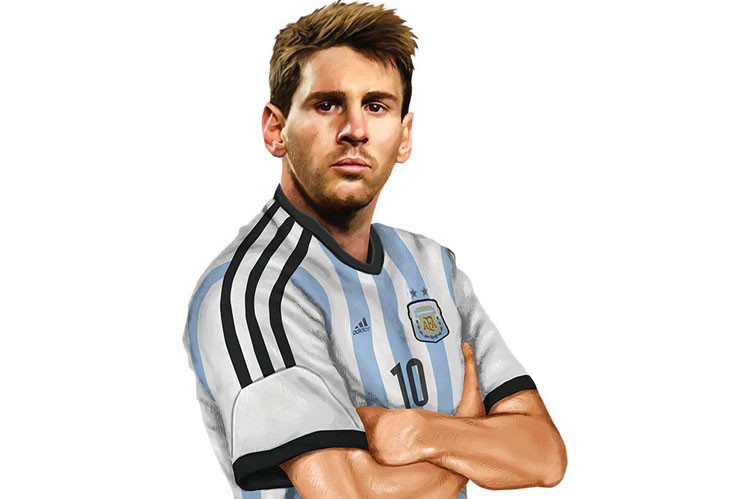
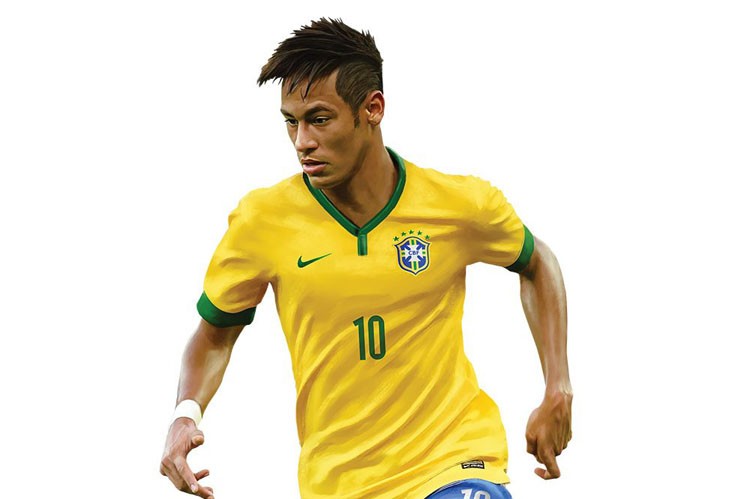
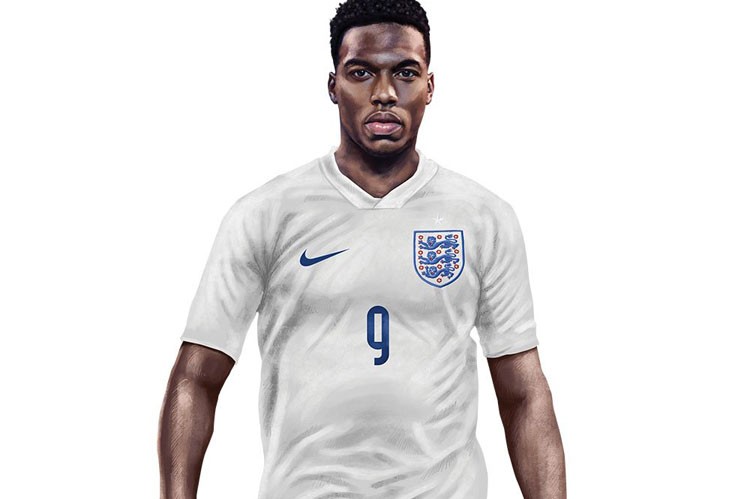

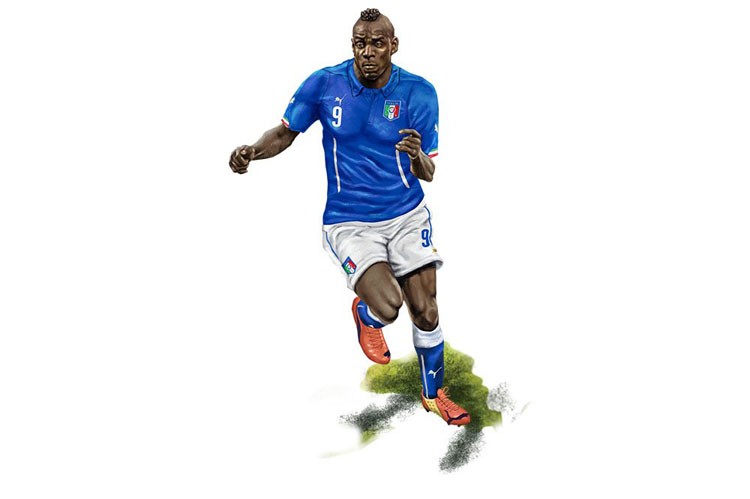
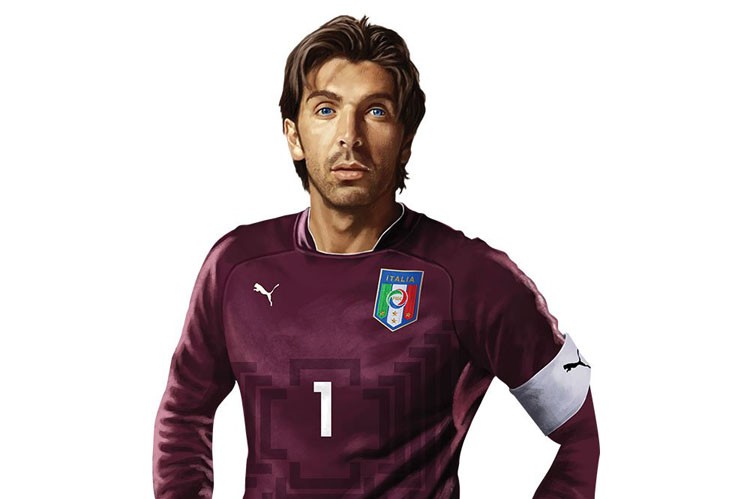

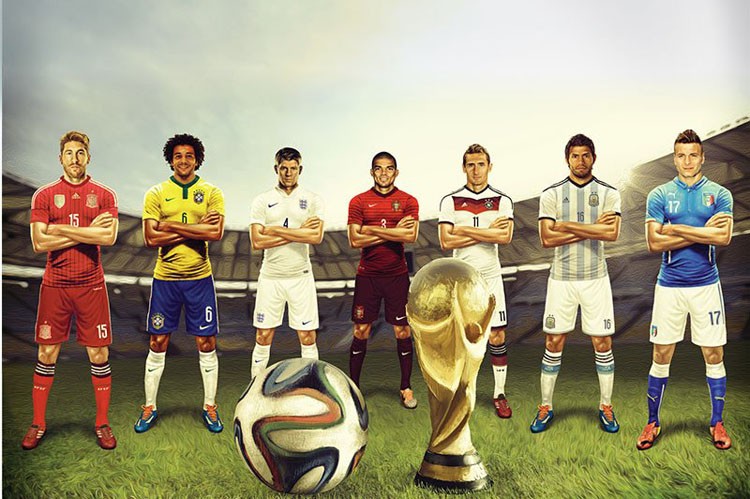





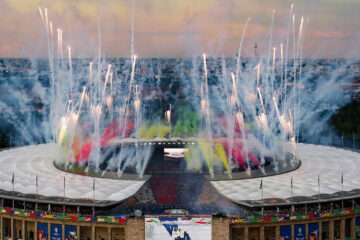
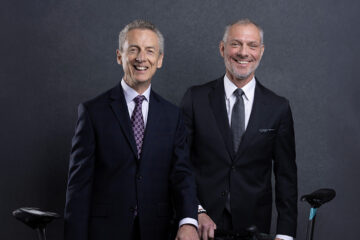
No Comment